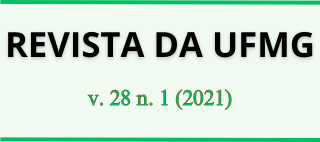Expandindo as paredes da sala de aula
aprendizados com o ensino a distância e ensino remoto emergencial
DOI:
https://doi.org/10.35699/2316-770X.2021.29089Keywords:
Distance learning, Emergency remote learning, university extension course, teaching computer programming, production of educational content, instructional designAbstract
In this article, we present an analytical-descriptive study on the design, implementation, and evaluation of a university extension course in an online modality within the scope of UFMG. It is a computer programming course aimed at students and graduates in the life sciences who wish to learn Bioinformatics. First, we present and discuss the specifics of distance education (EAD), the knowledge required in the design and implementation, and the challenges faced. Second, we assess the perception of students trained in the course and discuss the points to be improved and the perspectives that such assessments gave rise to. Third, we also discuss some of the contributions that this previous experience with DE has brought us in the context of emergency remote education (ERE). Finally, we consider the broad reach that this course modality can reach to benefit students who could not access this content in other ways.
Downloads
References
BENTO, D. (2018). A produção de material didático para EaD (1a. ed.). Cengage Learning.
DHAWAN, S. (2020). Online learning: a panacea in the time of COVID-19 crisis. Journal of Educational Technology Systems, 49(1), 5-22.
FIELD, S. (2001). Manual do roteiro (1a. ed.). Objetiva.
FILATRO, A. (2018). Como preparar conteúdo para EAD (1a. ed.). Saraiva Educação.
HIGASHI, R. M., Schunn, C. D., & Flot, J. B. (2017). Different underlying motivations and abilities predict student versus teacher persistence in an online course. Education Tech Research, 65(1), 1471-1473.
KENSKI, V. M. (Ed.). (2019). Design instrucional para cursos online (2a. ed.). Artesanato educacional.
RAPANTA, C., Botturi, L., Goodyear, P., Guàrdia, L. e Koole, M. (2020). Online university teaching during and after the covid-19 crisis: refocusing teacher presence and learning activity. Postdigital Science and Education, 2(1), 923-945.
UIJL, S., Filius, R. e Ten Cate, O. (2017). Student interaction in small private online courses. Medical Science Education, 27(1), 237–242.




